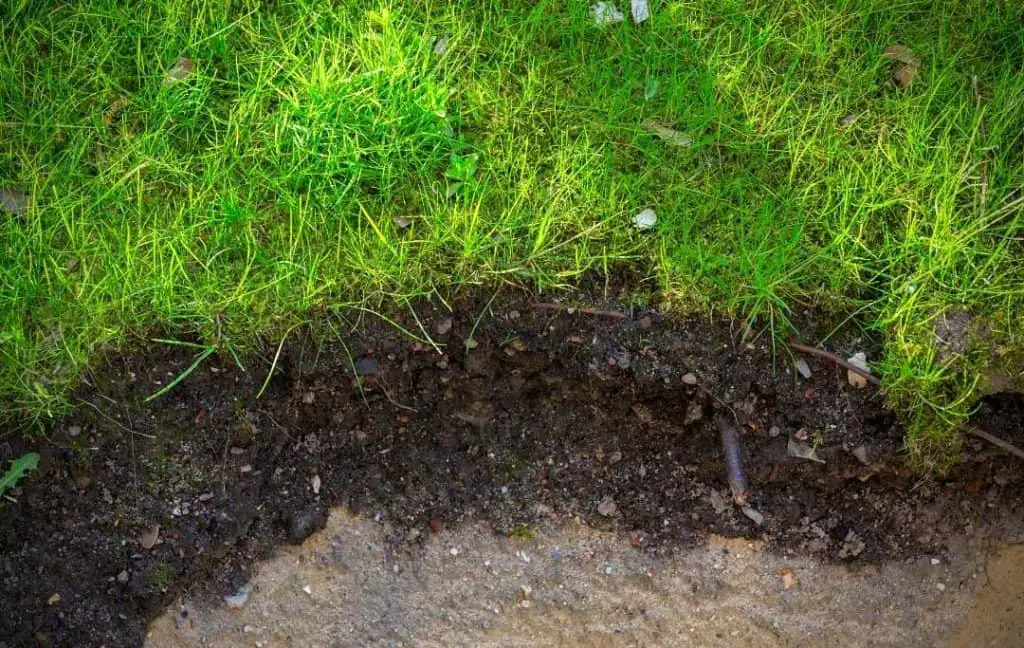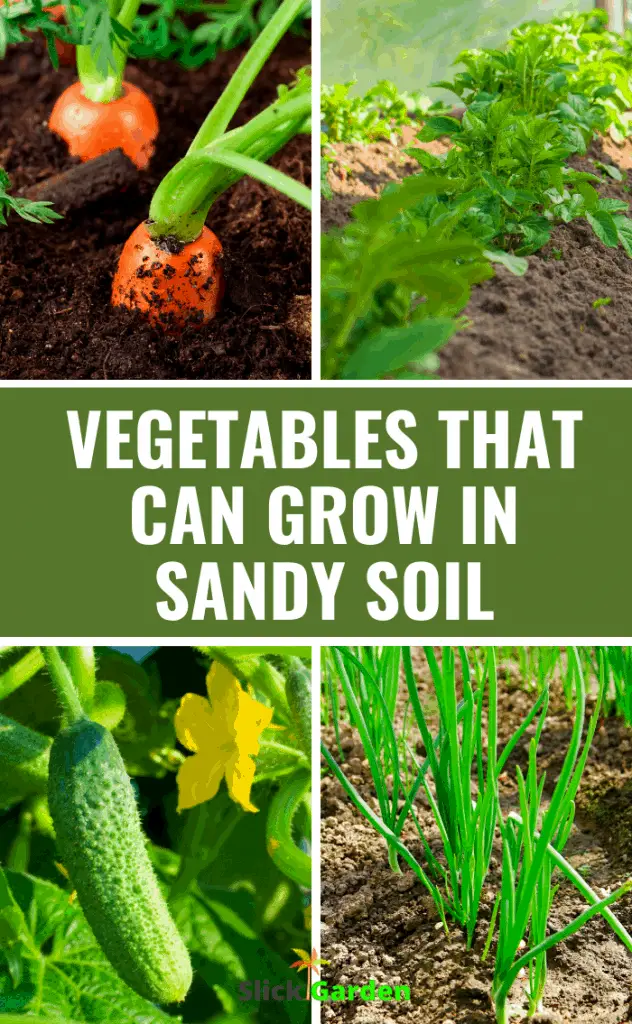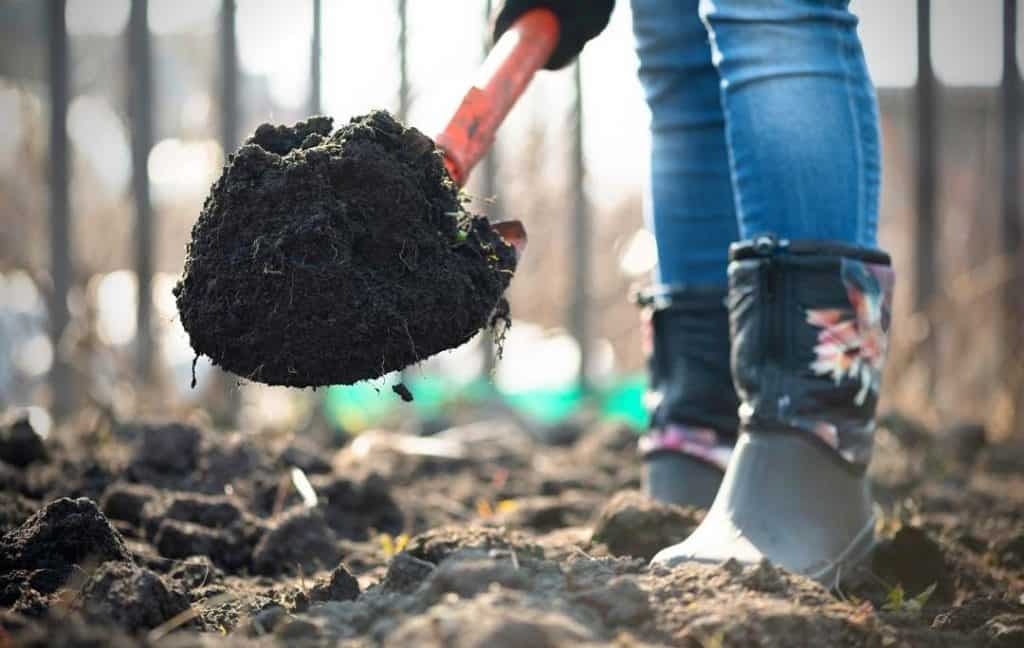Sandy soil can drain the water very quickly which is not good for many vegetables as major nutrients also go with the water. The sandy soil is made up of 60% sand and clay. This is the reason that the growing environment becomes very harsh for most of the vegetables especially those who need more water to grow.
If you are dealing with sand soil then you should add plenty of compost, leaf mold, or other organic matter to improve the water retention quality of the sandy soil. Make sure that you should add fertilizer frequently according to the need of your vegetable plants.
I know, it is difficult to deal with sandy soil but how can we forget that we can also get some benefits from it as it drains well and you can easily dig in, sandy soil helps to avoid fungal diseases in the garden. The best quality of sandy soil is that it can easily warm up early as compared to the other types of soil, it means you can start planting earlier in the season.
The harsh environment of the sandy soil is not good for most of the plants to thrive but amending it is much easier as compared to clay soil. The solution for dealing with this problem is that you should make a plan for your sandy soil before planting the vegetables.
TEXTURE AND STRUCTURE OF SANDY SOIL

The texture of the sand is light while we talk about the structure then we find it loose. Due to which the sandy soil drained quickly and couldn’t retain water for more time. This is the basic reason for low fertility but you can improve it.
Sandy soil has large pore spaces that are good for the movement of the roots. You can improve the structure of the soil by adding important organic matter such as compost, manure, leaf mold, and fertilizer as it will increase the water retention quality in the soil.
The particles of sand are large enough and surrounded by air pockets. The normal size of sand particles is from 0.2 to 2.0 mm. These pockets provide plenty of spaces for water and water doesn’t pool on the surface of the soil and soaks in it. It is not good in dry and hot weather.
VEGETABLES THAT THRIVE IN THE SANDY SOIL

If you grow vegetables in clay soil then it is not difficult to make better sandy soil. Deep-rooted vegetables often grow well in sandy soil as they can tolerate the crumbly and loose texture of sand. Here we are going to discuss some vegetables which can grow easily in the sandy soil.
1- CARROTS
Taproots of the carrots make it possible to penetrate the ground. That’s why carrots grow better in sandy soil due to their root systems. So sandy soil is a perfect growing medium for carrots as it provides depth to the roots. In clay soil, it is not possible to grow long tubers of carrots but in sandy soil, you will not face any difficulty growing long tubers.
This soil is malleable and allows carrots to push through it and helps to grow large beneath the surface. Carrots like well-drained soil because the roots of them will rot if sitting in water. But at the same time, they don’t like dryness so make sure your carrot plants get regular water.
First, you should plant carrots in small trays and after that plant them in the ground and keep them weed-free. After a few weeks, you will be able to eat your favorite crop.
2- RADISHES
Radish is another taproot vegetable that needs depth in the ground. Like carrots, radishes also grow well in sandy soils. Sandy soil is porous and malleable than clay soil.
All the deep-rooted vegetables find sand a more suitable medium for them. Radishes are ready to harvest within three weeks after planting. If your soil is free from rocks and solid objects then they will grow very fast.
Read More: How to Grow Radishes From Scraps?
3- POTATOES
Potatoes grow well in acidic soil. That’s why they easily thrive in sandy soil. Soil with acidic quality helps to eliminate the possibility of scab. It is a disease that lacks potatoes most of the time the entire crop of potatoes affected by this disease.
Read More: AN EASY WAY TO GROW POTATOES IN RAISED BED
4- LETTUCE
Lettuce is a leafy vegetable that can thrive in sandy soil. It can tolerate the dryness of sandy soil but it doesn’t mean that you show carelessness in watering the lettuce crop.
For its good yield, you should make it possible that your crop gets water regularly. Never let your soil completely dry out because dehydration especially on summer days is not good for any plant.
Read More: How to Grow Lettuce from Seed At Home
5- TOMATOES
Tomato is such a type of plant which needs a well-drained habitat for its growth. tomatoes like warm environments that sandy soil provides them. They are grown as perennials and you can enjoy a long growing season of them.
Read More: How To Grow Tomatoes In A Vertical Garden?
6- ZUCCHINI
It is a summer crop that performs exceptionally well in the warm and well-drained soil. It is a heavy feeder so you should be careful in fertilizing it regularly. Zucchini is such a healthy vegetable that can be harvested in abundance.
Read More: HOW TO GROW ZUCCHINI IN A RAISED GARDEN BED?
7- BEANS
Beans prefer well-drained soil but it is necessary to provide them with all possible and major nutrients. You should add the proper amount of compost to get the maximum yield of beans. It is not an easy task to deal with sandy soil and grow your favorite vegetable. But your little hard work makes it possible.
8- CUCUMBER
Cucumbers perform well in the presence of well-drained soil; it means the sandy medium is perfect for their great yield. But you should make it possible that cucumbers get regular water and primary nutrients.
But you should not forget that trellis is essential to support your cucumber plants. It stops spreading your crop on the ground and makes it easy for you to maintain.
9- ONIONS
Onions grow beneath the surface of the ground. This pungent veggie is used almost in most of the dishes. Onions like a warm environment and grow in sand.
If you are living in such an area where the cool-weather growing season is short. Onions are such a plant that can plant from seed, seedlings, or even from bulbs. Your bulb onions are ready to harvest when you see e stalks turn yellow.

10- GARLIC
You can plant garlic after the first frost in fall. You can also buy garlic from the market but homegrown garlic is fresher. There are different varieties of garlic available like the soft neck, hard neck, and elephant. You can choose one of your favorite varieties and enhance the taste of your dishes after its addition.
Read More: Easy Way Of Growing Garlic in Raised Beds
11- ROSEMARY
Rosemary likes to grow in sandy soil but in full sunlight. It means that you should choose the location where your rosemary plant can get full exposure to sunlight. Acidic nature and excellent drainage of sandy soil help a lot to grow rosemary plants.
12- OREGANO
Oregano also enjoys the acidity and drainage of sandy soil. Sunlight is very important for the growth of oregano. Select the location which is best for the better production of this herb.
13- THYMES
Like oregano and rosemary, thymes also like acidity and drainage of sand. But you should be careful while planting thymes as it likes full sunlight exposure like the other herbs.
14- ASPARAGUS
Acidic and drainage qualities of sand are not enough for the development of asparagus but it also needs a bone meal or rock phosphate as a fertilizer twice per week. Growing asparagus in sandy soil is no more a dream if you follow the instructions for the maintenance.
The good thing is that asparagus doesn’t like waterlogging. If the roots of this plant are exposed to stagnant water for a long time they will rot. It means that well-drained soil is a perfect medium for the outstanding growth of asparagus. Another benefit of sandy soil is that it helps to keep slugs off.
15- COLLARD GREENS
Collard greens can tolerate the dryness of sandy soil. But at the same time, you should be careful and make sure that your plants get regular water. Don’t let them dry in hot summers when the heat of the sun is at its peak.
Early spring is the best time for your plants to grow well. That’s why sandy soil is more suitable for collard greens. As you know that sand can warm fast or as compared to clay, so greens will not face any difficulty in adjusting.
16- TURNIP
Turnip is good for your health and can easily grow by seedlings. Turnips can tolerate the harsh conditions of sand but you should be punctual in providing regular water and fertilizer to get abundant greens and a lot of turnips for your kitchen. It is good for your health to get fresh vegetables from your garden.
17- CORN
Like zucchini, corn is also a heavy feeder. It will grow well in sandy soil if you fertilize it well. For the best yield, you should focus on the maintenance of the soil and add appropriate amendments to the soil so it will be possible for your soil to provide all the fundamental nutrients to the soil.
As you know due to drainage your plants can’t get proper nutrients as they wash out with water. So make sure that you will add organic material to your sandy soil so it will get fertility.
18- STRAWBERRIES
Strawberries are a favorite of almost everyone. This plant likes warm days and cool nights. They preferred well-drained soil which is the specialty of sand. Another benefit of sand is that it can help to pests away from the roots of this berry plant. Slugs, earwigs, and other critters like the juicy berries of these plants.
Read More: An Easy Way To Grow Strawberries In Hanging Baskets
HOW TO IMPROVE THE FERTILITY OF SANDY SOIL

Sandy soil is generally formed by the breakdown of rocks such as granite, quartz, and limestone. When you decide to grow your favorite vegetables in sandy soil then you must do some research so you can be aware of how to deal with sandy soil.
The texture of sandy soil is light and acidic. This type of soil is also known as light soil because it has a high proportion of sand and little amount of clay. Organic matter which is low in nitrogen such as wood, bark, and straw can be incorporated into the sandy soil so you can use these materials and can be composted.
You can also buy different mixtures of organic matter from nurseries, garden centers, or any composting company. The other option which is very inexpensive is that you can make your compost at home. If your budget is low and you want to maintain the quality of your sandy soil then it is the best idea.
For making compost you need a compost bin and all the waste materials such as peelings of fruits and vegetables, coffee grounds, and garden leaves. The compost or fertilizer which you buy from the market can have chemicals but the compost which you make at home is chemical-free and contains toxic materials.
